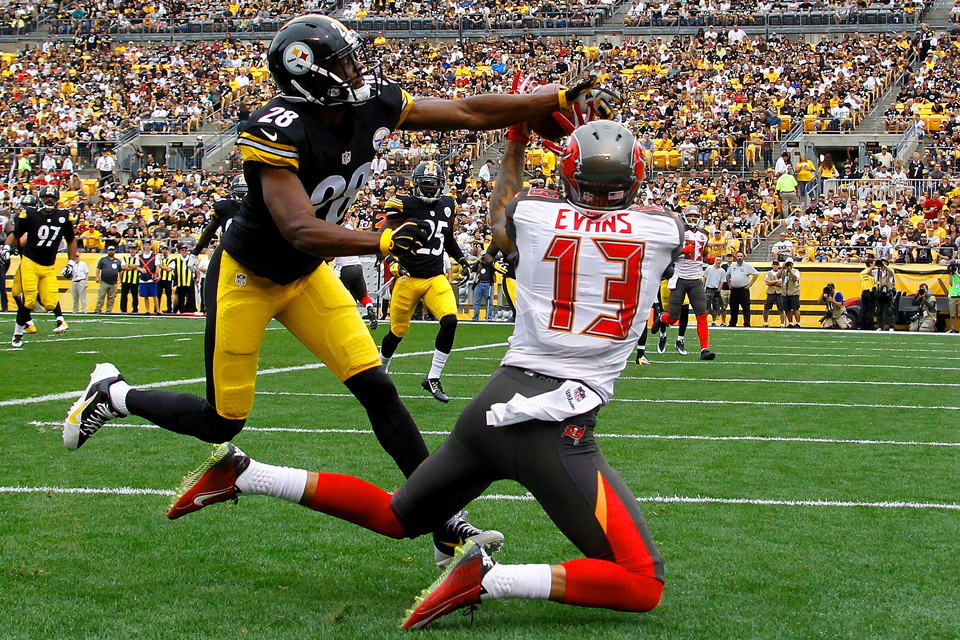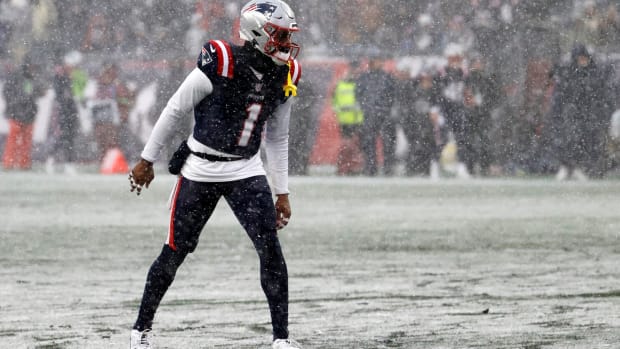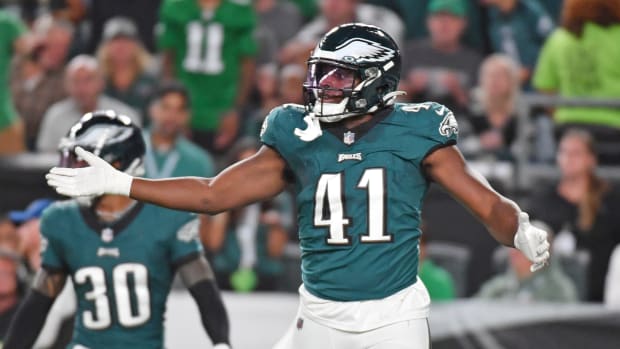
An Outlier Season for Rookie Wideouts, or the Start of a New Trend?
Greg,
I'm having a debate with my friend about the true impact of rookie wide receivers. My claim, as in the case of Odell Beckham Jr., Martavis Bryant and Mike Evans, is that the passing game has become such a big part of the offense that rookie wideouts look good based purely on the amount of passes thrown their way, but that it still takes three years for one to truly develop. My friend claims that with colleges adopting more pro-style systems, wide receivers hit the NFL as prepared as ever. Is there a way to measure the sudden rise in rookie wideouts impacting the game and if they are truly more prepared than in years past?
Sincerely,
Dan Seland
I’m going to give you two answers from different viewpoints—my eyes watching the players, and from the stats-based perspective of smart FootballOutsiders.com guys Aaron Schatz and Vincent Verhei.
There’s no question that this was the greatest class of rookie receivers we’ve ever seen. The NFL saw Beckham (1,305 yards in 12 games), Mike Evans (1,051), and Kelvin Benjamin (1,008) all go over 1,000 yards, while Sammy Watkins had 982 yards. (The closest class we’ve seen to this was 1986, when Ernest Givins had 1,062 yards and Bill Brooks 1,131.)
Before the draft, I wrote that rookie receivers and tight ends rarely pay immediate returns,and that was based on the fact that only 19 rookie receivers or tight ends had caught at least 50 passes coming out of the previous five drafts. Of the 35 taken in the first or second round during that span, only 12 reached that threshold—a 34.3% success rate. But of the 16 receivers or tight ends taken in the first or second round in 2014 year, seven had at least 50 receptions (43.8%).
2014 Year in Review
The 2014 MMQB awardsThe NFL season through the eyes of SI photographersHow all 32 teams finished compared to preseason predictionsThe NFL’s best and worst business decisions of 2014Amid NFL turmoil, 2014 was a good year for the BillsThe MMQB’s media awards
Why was this class better? And does it signal a new trend?
I think you and your friend are both right in certain respects. The NFL has become more of a passing league, with better passers rising from the college ranks, and rule tweaks continue to tilt the game in the favor of quarterbacks. And the rise of the spread offense—not only college but also in high school and youth sports—means that both passers and receivers are more steeped in the techniques and schemes that are being used in the NFL more than ever.
But the guys from FootballOutsiders.com say we should wait before calling this a new trend. From their point of view, this special draft class of receivers was an anomaly. “Part of this [rookie success], no doubt, is due to the hyper-inflated passing stats of this era in the NFL,” Verhei wrote to me. “Still, we have never seen this many freshmen have this much success in one season, and it's highly unlikely that this will be a regular occurrence.”
Schatz agrees. He pointed out that in the Playmaker Score section of their preseason almanac, they predicted unprecedented success for this year’s rookie class of receivers.
“Playmaker Score agrees with conventional wisdom that this year’s draft is an exceptionally strong class for finding wide receiver talent,” Nathan Forster wrote in the chapter. “This year, there were 13 receivers drafted that have Playmaker Ratings of 80 percent or more. No other year since 1996 had more than eight such players.”
So, yes, this year’s rookie class was awesome. But it could very well be a blip, and most likely it will take future wideouts a year or two in a pro system to really develop. We’ll have to keep any eye on this, and future Playmaker Scores.
* * *
Hi Greg:
I have a question for you to settle. It seems to me that the cap limits placed on rookie contracts are a good thing. A person who has not proven himself in the NFL should not be able to make millions more than an experienced player who has been contributing to the team for years.
But it seems to me that while the NFLPA's argument was to put more money into the pockets of more experienced players, it hasn't really worked out that way. Instead, it seems that there has just been a money transfer—from the rookie contracts of the first and second rounders to massive paychecks for the quarterbacks and perhaps two or three others. It seems to me that the other 50 players or so have not benefited very much.
Am I right?
Thanks,
Dennis Ashley
Great question, Dennis. While I think you’re correct and a quick look at positional averages seems to indicate that you are indeed correct, I still asked one of the many smart cap guys, Jason Fitzgerald from overthecap.com. My eyes start to glaze over after a couple of minutes of looking at numbers, but Jason has every team’s numbers on his site. And he knows them like the back of his hand.
I'd say that your statement is pretty accurate, though it’s a byproduct of the whole CBA rather than the rookie wage scale, which mainly impacts just the top 10 to 15 draft picks. Even a mid-tier quarterback is signing a contract these days for more than $17 million, a number that was pretty much the highest contract value when the lockout occurred. In general it has become a star-driven system, with big-name players getting very large contracts followed by a large drop off to the next tier of talent. Most of these players are signing team-friendly contracts and having to fight for every penny.
The slight changes to the required salary cap spending has also allowed teams to focus more on signing contracts with lower signing bonuses and larger cash salaries. This cash-based accounting has given teams much more flexibility for releasing players and/or reducing salaries than they had in the past.
Wild-Card Round Nickel Package
1) Ravens cornerback Ladarius Webb didn’t play against the Steelers in the teams’ first matchup, but often matched up with Antonio Brown in Pittsburgh’s 43-23 victory on Nov. 2. Brown finished with 11 catches for 144 yards, including a 54-yard touchdown. The Ravens had no answers for the Steelers’ crossing routes, and they gave Brown too much cushion when matched up one-on-one. Baltimore will have to try to be more physical with safety help over the top on Brown (easier said than done) to limit the damage this time around.
Football, 24/7
Keep up with the latest from Peter King and The MMQB.
2)
Most running backs are going to look ordinary compared to Le’Veon Bell, who is outstanding at rushing, receiving and blocking. But Josh Harris, who should get a bulk of the carries if the injured Bell can’t go against the Ravens, is ordinary compared to anybody. Most of the time he gets what is blocked—the Steelers could help Harris by spreading the field to remove defenders from the box—but Harris doesn’t standout in any area of the game. He plods through the hole and won’t make anybody miss despite being stoutly built. On his 59-yard run against the Bengals (called back by holding), the play was so exceedingly well blocked that Harris was barely touched until he was tackled. (To his credit, he has a little giddyup once he gets a head of steam.) For the season, Harris had 16 yards on nine carries (1.8 average). Expect the Steelers to spread things out and use a quick passing attack with receiver/runner Dri Archer in the backfield.
3) The Bengals didn’t do anything right in their 27-0 Week 7 loss at Indianapolis. It’s imperative that they find a way to run the ball better this time around, because Giovani Bernard and Jeremy Hill combined to rush 11 times for 32 yards. That forced Andy Dalton to have to drop back 41 times. That’s not a formula for a Bengals victory. It didn’t help that offensive coordinator Hue Jackson opened the game with three straight passes and passed on 10 of the first 12 plays. More running, less Andy.
4) If Arizona is to upset Carolina, they’re going to need a perfect effort from their fading defense (the Cardinals are second in FootballOutsiders.com’s overall rankings but 14th in weighted ranking, which emphasizes the most recent games). The Cardinals gave up an average of 236.5 yards rushing in season-ending losses to Seattle and San Francisco. Running the ball is what carried Carolina on a four-game winning streak (199.3 yards per game) to finish the season.
5) One of the great individual matchups of the weekend will pit Lions RE Ezekial Ansah against Cowboys LT Tyron Smith. Both are equally adept at the run and pass. Ansah will be a key to stopping Dallas. While the Cowboys run the ball well all over the line, they are ranked fifth and first in the NFL, respectively, when running around left end and over left tackle. Wouldn’t be surprised to see the Cowboys run a bit more righthanded by double-teaming Ndamukong Suh and going at the weaker (at least compared to Ansah) LE Jason Jones.
Follow The MMQB on Facebook, Twitter and Instagram.
[widget widget_name="SI Newsletter Widget”]













































